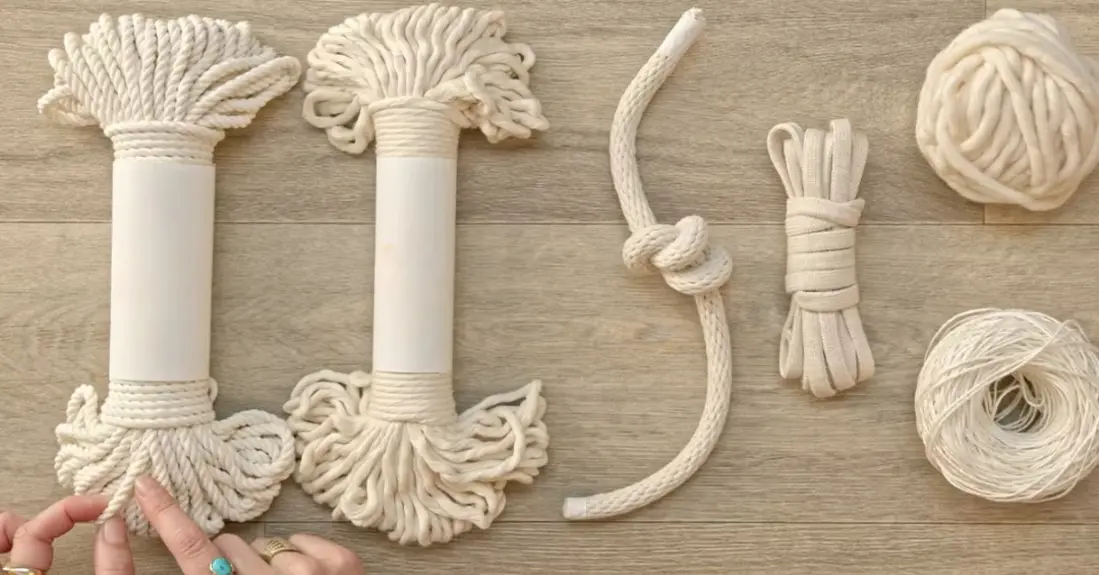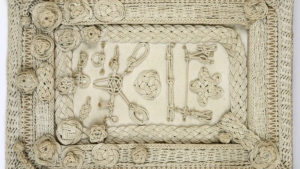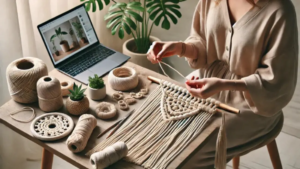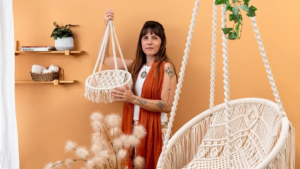Macrame cotton rope texture variations are revolutionizing the world of fiber arts, offering crafters endless possibilities to create stunning pieces that captivate audiences worldwide. Whether you’re a seasoned artisan or just beginning your macrame journey, understanding how different cotton rope textures impact your projects can elevate your creations from ordinary to extraordinary.
The beauty of macrame lies not only in its intricate knotting techniques but also in the materials that bring these designs to life. Cotton rope, with its natural appeal and versatility, serves as the foundation for countless macrame projects. However, many crafters overlook the profound impact that different macrame cotton rope texture variations can have on their finished pieces.
Today’s macrame enthusiasts are discovering that texture selection goes far beyond aesthetics. The right cotton rope texture can determine whether your wall hanging creates a cozy bohemian atmosphere or a sleek modern statement. It influences durability, maintenance requirements, and even the learning curve for different knotting techniques.
Understanding Macrame Cotton Rope Texture Variations
The Foundation of Exceptional Macrame Projects
Macrame cotton rope texture variations form the cornerstone of successful fiber art projects. These variations encompass everything from thread count and twist patterns to surface treatments and fiber processing methods. Each variation brings unique characteristics that directly influence your project’s final appearance, feel, and functionality.
Cotton rope manufacturers employ various techniques to create distinct textures. Single-strand cotton ropes offer smooth, consistent surfaces perfect for beginners learning basic knots. Multi-strand twisted ropes provide enhanced durability and create interesting shadow patterns in finished pieces. Braided cotton ropes deliver exceptional strength while maintaining flexibility essential for complex geometric patterns.
The manufacturing process significantly affects macrame cotton rope texture variations. Mercerized cotton ropes undergo chemical treatments that enhance luster and dye absorption, resulting in vibrant colors and silky textures. Organic cotton ropes maintain natural irregularities that create rustic, artisanal appeal. Combed cotton varieties eliminate shorter fibers, producing smoother textures ideal for detailed work.
Natural vs. Processed Cotton Rope Textures
Understanding the differences between natural and processed macrame cotton rope texture variations helps crafters make informed material choices. Natural cotton ropes retain the fiber’s inherent characteristics, including slight variations in thickness and occasional nubs that add organic charm to finished pieces.
Processed cotton ropes undergo various treatments to achieve specific texture profiles. Brushed cotton ropes feature raised fibers that create soft, fuzzy textures perfect for cozy home decor items. Ring-spun cotton ropes offer superior strength and smoother surfaces through advanced spinning techniques. Open-end spun varieties provide cost-effective options with slightly rougher textures suitable for outdoor projects.
The choice between natural and processed macrame cotton rope texture variations depends on your project goals. Natural textures excel in bohemian, rustic, and eco-friendly designs where organic imperfections enhance authenticity. Processed textures shine in modern, minimalist projects requiring consistent appearance and enhanced performance characteristics.
Popular Macrame Cotton Rope Texture Variations
Twisted Cotton Rope Textures
Twisted cotton rope represents one of the most versatile macrame cotton rope texture variations available to crafters today. These ropes feature multiple strands wound together in helical patterns that create distinctive surface textures and enhanced structural integrity. The twisting process introduces natural spirals that catch light beautifully, adding dimensional interest to wall hangings and plant holders.
Different twist directions produce varying visual effects in finished macrame pieces. S-twist ropes spiral clockwise, while Z-twist varieties spiral counterclockwise. Combining both twist directions in single projects creates dynamic contrast and prevents rope from naturally untwisting during use. The tightness of the twist also affects texture, with loose twists providing softer drape and tight twists offering increased durability.
Twisted macrame cotton rope texture variations excel in projects requiring both strength and visual interest. The rope’s natural tendency to create shadows between twisted elements adds depth to flat surfaces. This characteristic makes twisted cotton ropes particularly effective for large-scale installations and outdoor applications where weather resistance matters.
Braided Cotton Rope Textures
Braided cotton rope textures offer exceptional versatility among macrame cotton rope texture variations. These ropes feature interwoven strands that create flat, ribbon-like profiles perfect for certain knotting techniques. The braiding process distributes stress evenly across multiple strands, resulting in superior load-bearing capacity compared to twisted alternatives.
Three-strand braids provide classic rope appearance with balanced texture and flexibility. Four-strand braids create flatter profiles ideal for intricate geometric patterns. Eight-strand and higher braids produce increasingly smooth surfaces that showcase complex knotwork beautifully. The braiding pattern itself becomes a design element, especially in projects where rope sections remain unknotted.
Braided macrame cotton rope texture variations particularly shine in functional projects like hammocks, swings, and heavy-duty hangers. The even stress distribution prevents premature failure at stress concentration points. Additionally, braided textures resist fraying better than twisted alternatives, making them ideal for projects requiring frequent handling or outdoor exposure.
Single-Strand Cotton Rope Textures
Single-strand cotton ropes represent the simplest among macrame cotton rope texture variations, yet they offer unique advantages for specific applications. These ropes consist of continuous cotton fibers spun into uniform thickness without additional twisting or braiding processes. The resulting smooth, consistent texture provides clean lines ideal for minimalist designs.
Single-strand textures showcase knot definition exceptionally well because they lack competing surface patterns. This characteristic makes them perfect for learning new techniques and creating projects where knot structure serves as the primary visual element. The smooth surface also accepts dyes evenly, enabling vibrant color applications impossible with textured alternatives.
However, single-strand macrame cotton rope texture variations require careful handling due to their tendency to fray and unravel. Proper end finishing becomes crucial for long-term durability. Despite this limitation, single-strand ropes remain popular for indoor decorative projects where their clean aesthetic enhances contemporary interior designs.
Project Impact of Different Rope Textures
Visual Impact and Aesthetic Considerations
The selection of appropriate macrame cotton rope texture variations dramatically influences your project’s visual impact and overall aesthetic appeal. Smooth textures create clean, modern looks that complement contemporary interior design schemes. These textures allow knot patterns to take center stage without competing visual elements from rope surface variations.
Textured ropes introduce organic elements that enhance bohemian and rustic design themes. The interplay between knot shadows and rope surface textures creates depth and visual interest impossible to achieve with smooth alternatives. Highly textured macrame cotton rope texture variations can transform simple knot patterns into complex-appearing designs through pure material selection.
Color interaction varies significantly across different rope textures. Smooth surfaces reflect light uniformly, maintaining color consistency throughout projects. Textured surfaces create natural highlights and shadows that can make single colors appear multitonal. This characteristic allows crafters to achieve complex visual effects using simple material palettes.
Functional Performance Differences
Different macrame cotton rope texture variations exhibit distinct functional performance characteristics that directly impact project success and longevity. Twisted ropes generally provide superior tensile strength due to load distribution across multiple strands. This makes them ideal for load-bearing applications like plant hangers and functional storage solutions.
Braided textures offer excellent abrasion resistance, making them suitable for items experiencing regular contact or movement. The interwoven strand pattern prevents individual fiber damage from compromising overall rope integrity. This durability advantage makes braided macrame cotton rope texture variations perfect for outdoor furniture and children’s play items.
Single-strand ropes provide maximum flexibility for intricate knotwork but sacrifice durability for workability. They excel in decorative applications where appearance matters more than structural performance. Understanding these trade-offs helps crafters select appropriate textures for specific project requirements.
Maintenance and Durability Factors
Long-term maintenance requirements vary significantly among macrame cotton rope texture variations, affecting project lifespan and care routines. Smooth ropes collect less dust and debris, making them easier to clean and maintain. Simple vacuuming or gentle brushing typically suffices for routine maintenance of smooth-textured projects.
Highly textured ropes trap particles more readily, requiring more intensive cleaning procedures. However, the trapped debris often becomes less visible within textured surfaces compared to smooth alternatives. This characteristic can be advantageous for projects in high-traffic areas where perfect cleanliness proves challenging to maintain.
Fraying resistance varies considerably across different macrame cotton rope texture variations. Twisted and braided textures naturally resist unraveling because damaged individual strands remain secured by surrounding elements. Single-strand ropes require careful handling and proper end treatments to prevent deterioration from normal use.
Advanced Techniques for Texture Selection
Matching Textures to Project Types
Successful macrame projects require thoughtful matching of cotton rope texture variations to specific project requirements and intended uses. Wall hangings benefit from textures that create interesting light patterns and visual depth. Medium-twist cotton ropes provide optimal balance between shadow creation and knot definition clarity.
Plant hangers demand macrame cotton rope texture variations that prioritize strength and weather resistance over pure aesthetics. Tightly twisted or braided textures offer superior load-bearing capacity and moisture resistance essential for supporting heavy planters in humid environments. The texture selection directly impacts both safety and longevity in functional applications.
Decorative items like table runners and lampshades require textures that complement surrounding decor while providing appropriate stiffness for shape retention. Lightly textured cotton ropes maintain elegant appearance while offering sufficient body to support complex three-dimensional forms without excessive drooping or deformation over time.
Combining Multiple Textures
Advanced macrame artists increasingly experiment with combining multiple cotton rope texture variations within single projects to achieve unique visual and functional effects. This technique requires careful planning to ensure different textures work harmoniously rather than competing for attention or compromising structural integrity.
Texture graduation creates smooth transitions between different rope types, enabling subtle shifts in visual weight and surface interest throughout large projects. Starting with smooth textures in detailed areas and progressing to highly textured sections in background regions maintains focus while adding overall richness to finished pieces.
Contrasting macrame cotton rope texture variations can emphasize specific design elements or create dramatic focal points within larger compositions. Combining matte and lustrous textures highlights the inherent beauty of each material while creating sophisticated interplay between light and shadow throughout the finished piece.
Color and Texture Interaction
The relationship between color and texture in macrame cotton rope texture variations significantly influences final project appearance and emotional impact. Light colors emphasize texture details through enhanced shadow contrast, making them ideal for showcasing complex rope patterns and surface variations. Dark colors minimize texture visibility while creating dramatic silhouettes perfect for bold geometric designs.
Dye absorption varies across different rope textures, affecting color intensity and uniformity. Highly twisted textures may show color variations between raised and recessed areas, creating natural depth and visual interest. Smooth textures accept dyes uniformly but may appear flat without additional design elements to create visual complexity.
Metallic and iridescent finishes interact uniquely with various macrame cotton rope texture variations. Smooth surfaces showcase metallic effects uniformly, while textured surfaces create subtle color shifts as viewing angles change. These interactions offer opportunities for creating sophisticated projects that change appearance under different lighting conditions.
Choosing the Right Texture for Your Project
Beginner-Friendly Texture Options
New macrame enthusiasts benefit from starting with forgiving cotton rope texture variations that facilitate learning while producing attractive results. Medium-twist cotton ropes provide optimal balance between knot definition and error forgiveness. These textures mask minor inconsistencies in knot tension while clearly showing proper technique execution.
Slightly textured surfaces help beginners maintain consistent grip and prevent slippage during knotting processes. Smooth ropes can become slippery and difficult to control, especially for crafters still developing muscle memory for different knot types. The subtle texture provides tactile feedback that improves technique development and builds confidence.
Avoid highly textured or extremely smooth macrame cotton rope texture variations until basic skills develop fully. Complex surface patterns can obscure knot structure, making it difficult to identify and correct mistakes. Once fundamental techniques become second nature, crafters can explore more challenging textures that offer enhanced visual impact.
Professional Project Considerations
Professional macrame artists must consider client expectations, installation requirements, and long-term performance when selecting cotton rope texture variations. Commercial installations demand materials that maintain appearance under continuous exposure to environmental factors while requiring minimal maintenance throughout their service life.
Custom residential projects benefit from texture selections that complement existing decor while providing adequate durability for expected use patterns. Consultation with clients about maintenance expectations and aesthetic preferences guides texture selection decisions that ensure long-term satisfaction with finished projects.
Professional applications often require documented performance specifications and material certifications unavailable with craft-grade supplies. Commercial-grade macrame cotton rope texture variations undergo testing for strength, colorfastness, and environmental resistance that provides necessary assurance for demanding applications.
Budget and Quality Considerations
Cotton rope texture variations span wide price ranges reflecting differences in fiber quality, processing complexity, and manufacturing standards. Premium organic cotton ropes command higher prices but offer superior feel, appearance, and environmental credentials appealing to quality-conscious crafters and eco-aware consumers.
Mid-range options provide excellent balance between quality and affordability for most macrame projects. These macrame cotton rope texture variations undergo sufficient processing to ensure consistency and performance while remaining accessible to hobby crafters working within typical budget constraints.
Economy-grade ropes serve specific purposes where appearance standards permit compromises in texture consistency or finishing quality. These options work well for practice projects, temporary installations, or applications where rope remains hidden within larger assemblies.
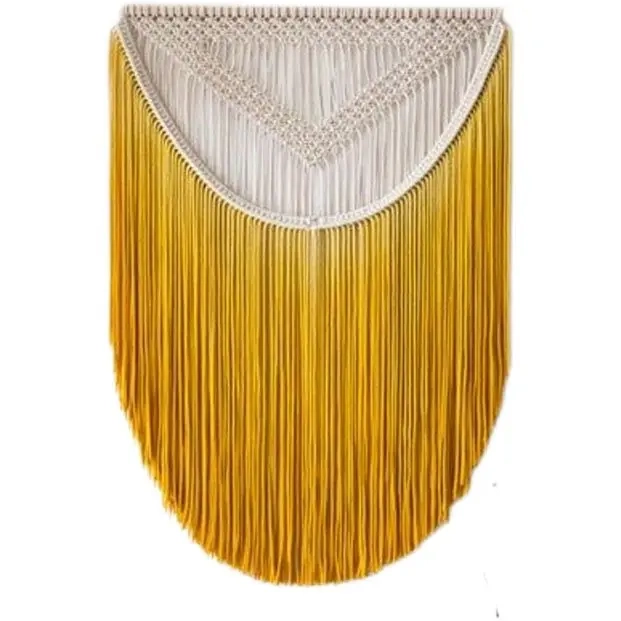
DIY Mini Boho Macrame Curtains
Introduce a touch of youthful elegance and artistic flair to your space with our DIY Mini Boho Macrame Curtains. Crafted to perfection, these handwoven tapestries embody the spirit of Bohemian and contemporary European-American styles.
Frequently Asked Questions
What’s the difference between 3-strand and single-strand cotton rope for macrame projects?
3-strand cotton rope consists of three separate strands twisted together, creating a textured surface with natural grooves and ridges that add visual interest and provide better grip during knotting. This macrame cotton rope texture variation offers superior strength and durability because load distributes across multiple strands. Single-strand rope features smooth, uniform surfaces that showcase knot definition clearly but may be more challenging for beginners to handle and less durable under stress. The choice depends on your project’s aesthetic goals and structural requirements.
How does cotton rope texture affect the final appearance of macrame wall hangings?
Cotton rope texture dramatically influences wall hanging appearance through light interaction and shadow creation. Highly textured macrame cotton rope texture variations create depth and visual interest by casting natural shadows between surface elements, making simple knot patterns appear more complex. Smooth textures provide clean, modern appearances that emphasize knot structure over material characteristics. Twisted textures add movement and organic feel perfect for bohemian designs, while braided options offer structured, geometric aesthetics suitable for contemporary interiors.
Can I mix different cotton rope textures in the same macrame project?
Absolutely! Combining different macrame cotton rope texture variations within single projects creates sophisticated visual effects and functional benefits. Use smooth textures for detailed knotwork where clarity matters, and incorporate textured varieties in background areas for added interest. Ensure color compatibility and similar stretch characteristics when mixing textures to maintain structural integrity. Start with subtle texture differences before attempting dramatic contrasts, and always test combinations on small samples before committing to large projects.
What cotton rope texture works best for outdoor macrame projects?
Outdoor macrame projects require cotton rope texture variations that balance weather resistance with aesthetic appeal. Tightly twisted or braided textures offer superior durability and moisture resistance compared to loose or single-strand alternatives. Look for treated cotton ropes with enhanced UV resistance and mold prevention properties. Avoid highly absorbent textures that retain moisture and promote deterioration in humid climates. Consider synthetic blends for maximum weather resistance while maintaining natural appearance and workability.
Conclusion
Macrame cotton rope texture variations represent far more than simple material choices – they serve as fundamental design tools that determine project success, aesthetic impact, and long-term performance. Understanding how different textures interact with light, color, and knotting techniques empowers crafters to make informed decisions that elevate their work from amateur attempts to professional-quality creations.
The journey through twisted, braided, and single-strand options reveals that each macrame cotton rope texture variation brings unique advantages suited to specific applications and design goals. Whether you’re creating delicate wall art requiring smooth precision or robust outdoor installations demanding maximum durability, matching texture characteristics to project requirements ensures optimal results that satisfy both functional needs and aesthetic aspirations.

